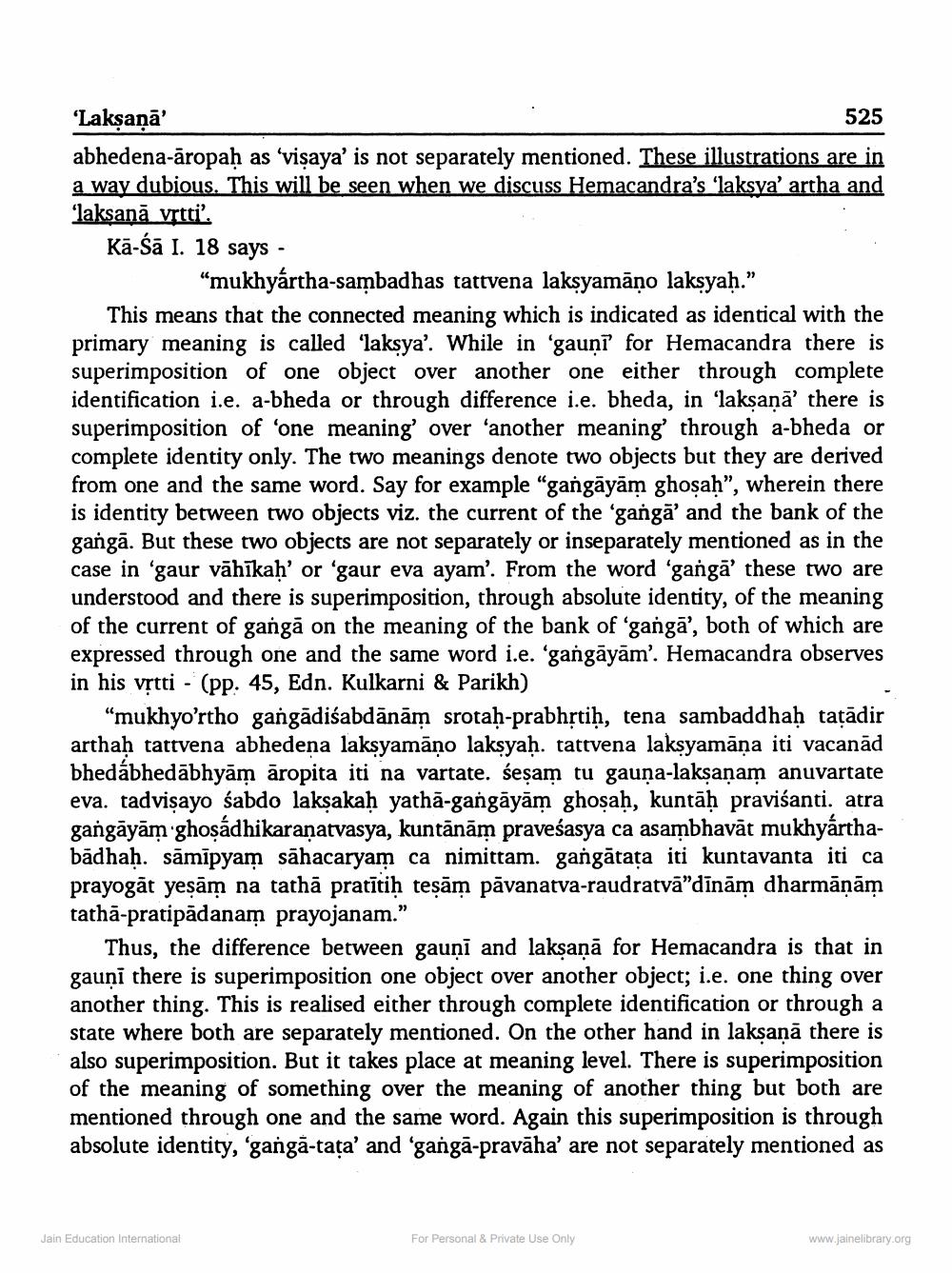________________
'Laksanā
525
abhedena-āropah as 'visaya' is not separately mentioned. These illustrations are in a way dubious. This will be seen when we discuss Hemacandra's 'laksya' artha and 'laksanā vrtti'. Kā-Śā I. 18 says -
“mukhyártha-sambadhas tattvena laksyamāņo laksyah.” This means that the connected meaning which is indicated as identical with the primary meaning is called 'laksya'. While in 'gauni for Hemacandra there is superimposition of one object over another one either through complete identification i.e. a-bheda or through difference i.e. bheda, in 'laksana' there is superimposition of one meaning over 'another meaning through a-bheda or complete identity only. The two meanings denote two objects but they are derived from one and the same word. Say for example "gangāyām ghosah", wherein there is identity between two objects viz. the current of the 'gangā' and the bank of the gangā. But these two objects are not separately or inseparately mentioned as in the case in 'gaur vāhīkah' or 'gaur eva ayam'. From the word 'ganga' these two ar understood and there is superimposition, through absolute identity, of the meaning of the current of gangā on the meaning of the bank of 'ganga', both of which are expressed through one and the same word i.e. 'gangāyām'. Hemacandra observes in his vrtti - (pp. 45, Edn. Kulkarni & Parikh)
“mukhyo'rtho gangādiśabdānām srotah-prabhștiḥ, tena sambaddhaḥ taţādir arthah tattvena abhedena laksyamāno laksyaḥ. tatevena laksyamāņa iti vacanād bhedábhedābhyām āropita iti na vartate. sesam tu gauna-laksanam anuvartate eva. tadvisayo śabdo laksakah yathā-gangāyām ghoṣaḥ, kuntāḥ pravišanti. atra gangāvām ghosádhikaranatvasya, kuntānām praveśasya ca asambhavāt mukhyártha badhah. sāmīpyam sāhacaryam ca nimittam. gangātaţa iti kuntavanta iti ca prayogāt yesām na tathā pratītih teşām pāvanatva-raudratvā"dīnām dharmānām tathā-pratipādanam prayojanam."
Thus, the difference between gauņi and laksaņā for Hemacandra is that in gauni there is superimposition one object over another object; i.e. one thing over another thing. This is realised either through complete identification or through a state where both are separately mentioned. On the other hand in laksaņā there is also superimposition. But it takes place at meaning level. There is superimposition of the meaning of something over the meaning of another thing but both are mentioned through one and the same word. Again this superimposition is through absolute identity, 'gangã-tata' and 'gangā-pravāha' are not separately mentioned as
Jain Education International
For Personal & Private Use Only
www.jainelibrary.org




